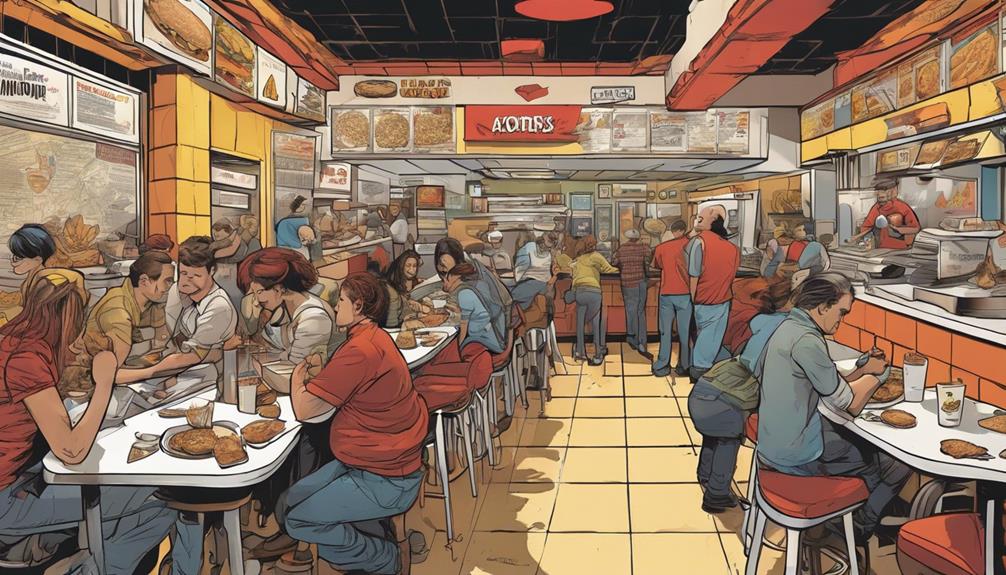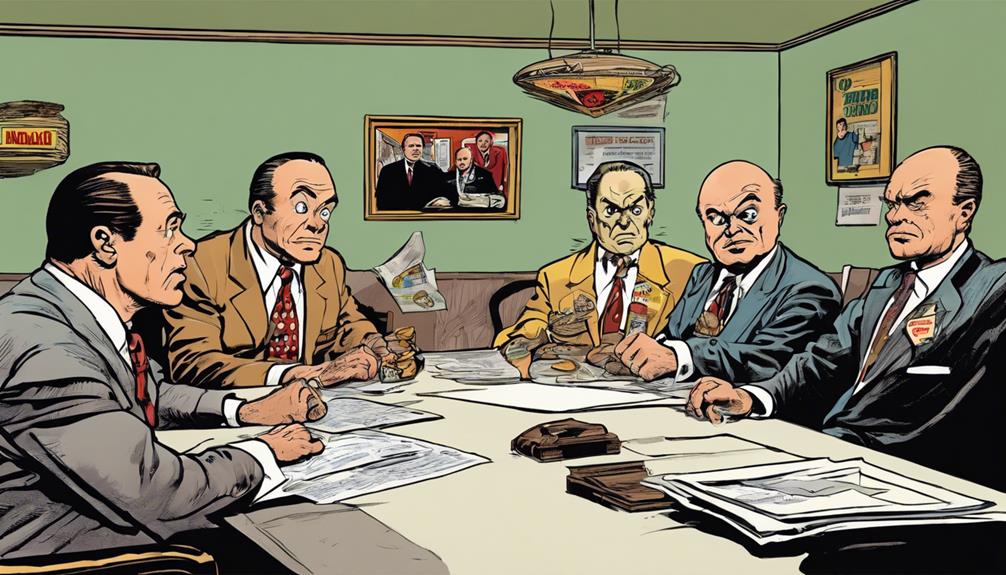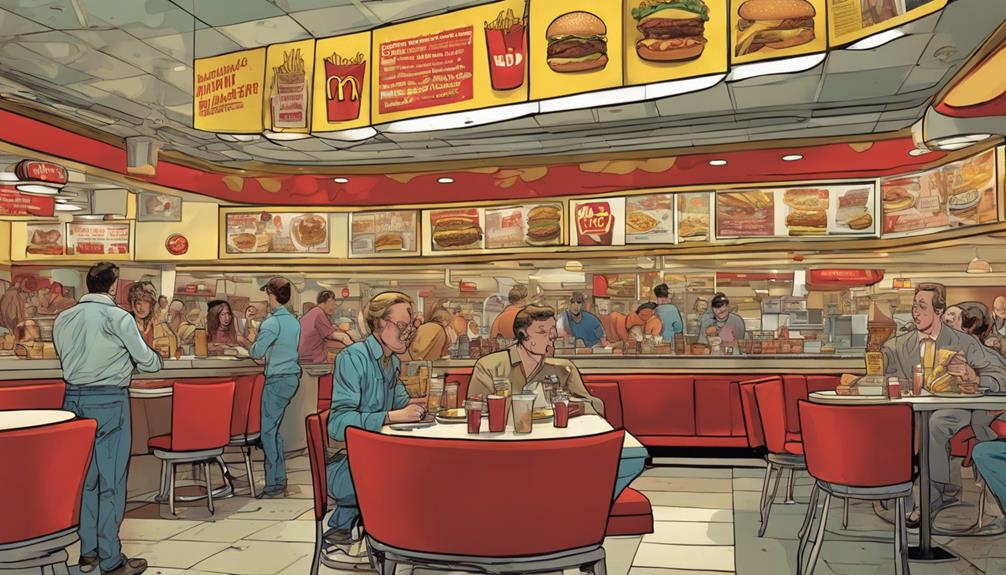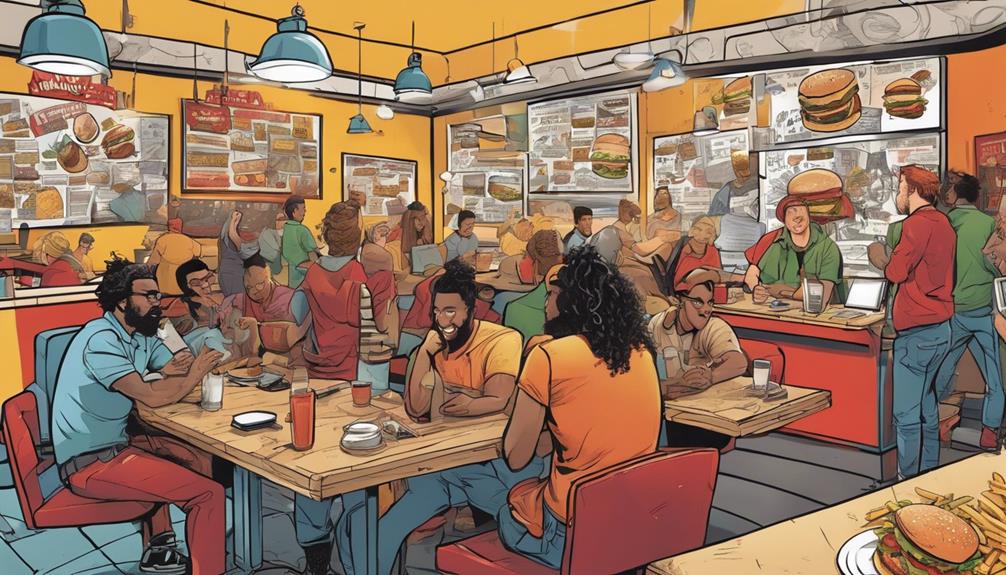Ray Kroc changed the fast-food landscape forever. After discovering a small restaurant run by the McDonald brothers, he recognized the potential for a nationwide franchise. Kroc's innovative assembly-line model emphasized speed, quality, and a standardized menu. He implemented a successful franchising strategy, resulting in over 700 locations by 1965. While his aggressive expansion created tension with the McDonald brothers, it ultimately led to their buyout and McDonald's rise as a global powerhouse with over 25,000 restaurants. Kroc's story offers valuable lessons on entrepreneurship and adaptability that you won't want to miss. Kroc’s legacy extends beyond the fast-food industry, as he also founded the Ronald McDonald House Charities, a philanthropic organization that has provided support to millions of families with sick children. In addition to his business acumen, Kroc’s charitable efforts showcase his role as a health revolution leader, striving to make a positive impact on communities around the world. His remarkable journey is an inspiration for aspiring entrepreneurs and leaders looking to make a lasting difference in their industries and beyond.
Key Takeaways
- Ray Kroc revolutionized the fast food industry by transforming a small restaurant concept into a global franchise model with McDonald's.
- His focus on efficient, standardized food production allowed for rapid expansion, leading to over 700 locations by 1965.
- Kroc's strategic partnerships and emphasis on real estate ensured consistent revenue and profitability for the franchise.
- He faced conflicts with the McDonald brothers over operational changes, ultimately leading to his buyout and control of the brand.
Early Life and Career
Ray Kroc's journey into the world of entrepreneurship began in his youth, where he honed his sales skills selling lemonade and working in a grocery store. At just a teenager, you'd see him quit school to become a salesperson for Lily-Tulip Cup Co. His natural salesmanship shone through, and he quickly became the top salesperson there.
This early success fueled his ambition, leading him to meet Earl Prince, the inventor of the Multimixer. Intrigued by the food service industry, Kroc spent the next 15 years selling Multimixers to drugstores and restaurants.
Each interaction sharpened his understanding of customer needs and business operations, laying a solid foundation for his future endeavors in the fast-food empire he'd soon create.
Discovery of McDonald's

In the early 1950s, a decline in sales led Kroc to discover a small restaurant in California that would change the fast-food landscape forever. This restaurant, run by the McDonald brothers, showcased an innovative assembly-line food production model that caught Kroc's attention. You'd be amazed at how efficient their process was, making it clear they'd something special. Kroc quickly recognized the potential and proposed expanding the concept nationwide.
The key features of the McDonald brothers' model included:
- Efficient self-service model
- Focus on speed and quality
- Standardized menu items
- High volume, low-cost production
This marked the beginning of Kroc's journey to revolutionize fast food, setting the stage for a brand that would dominate the industry for decades.
Expansion Strategies

Kroc's vision for McDonald's didn't stop at discovery; he implemented savvy expansion strategies that transformed the fast-food industry.
You can see how he capitalized on the franchise model, allowing other entrepreneurs to operate under the McDonald's brand. By charging a percentage of gross sales, he guaranteed consistent revenue streams while empowering franchisees.
His partnership with financial expert Harry Sonnenborn shifted focus to real estate, making McDonald's a landlord in lucrative locations. This innovative approach secured profits regardless of restaurant performance.
Rapid expansion followed, with over 700 locations by 1965. Kroc's relentless pursuit of growth and efficiency set the stage for McDonald's dominance, creating a blueprint for future fast-food franchises.
His strategies revolutionized how fast food could be scaled nationwide.
Conflict With the Mcdonald Brothers

Tensions escalated between the McDonald brothers and Kroc as disagreements over operational changes threatened the original vision of their fast-food concept. You can sense the growing divide as Kroc pushed for innovations that the brothers resisted. This conflict culminated in Kroc's 1961 buyout of the brothers for $2.7 million, securing his control over the brand.
Kroc wanted to standardize menu items and streamline operations.
The brothers valued their original, family-focused approach.
Kroc's aggressive expansion plans clashed with the brothers' caution.
Disputes over franchise fees and profits intensified tensions.
Kroc's opening of a McDonald's nearby led to the brothers' restaurant's closure.
These decisions reshaped the fast-food landscape, but at a significant cost to their relationship.
Legacy of McDonald's

The fallout from Kroc's buyout of the McDonald brothers marked a turning point that would lead to McDonald's becoming a global powerhouse in the fast-food industry.
With Kroc at the helm, you witnessed the brand's rapid expansion, growing from a single location to over 25,000 restaurants worldwide.
By the 1970s, McDonald's had established itself as the largest food supplier in the U.S., and at Kroc's death in 1984, a new restaurant opened every 17 hours.
You can see how McDonald's transcended mere dining; it became a cultural icon.
The brand's golden arches are now recognized more than the Christian cross, symbolizing Kroc's vision and the lasting legacy of fast food as a staple in modern life.
Global Impact of McDonald's

McDonald's has reshaped global dining habits and fast food culture, influencing how people eat and socialize across diverse countries. You've probably noticed its role in popularizing fast food, making it a staple in many cultures. Its impact extends beyond menus, affecting local economies and lifestyles.
It creates jobs and supports local suppliers in various regions.
The brand adapts its menu to reflect local tastes and preferences, fostering cultural exchange.
Its marketing strategies set trends that many other businesses follow.
McDonald's promotes a sense of community through family-friendly dining experiences.
The iconic golden arches serve as a symbol of globalization, representing American culture worldwide.
In these ways, McDonald's continues to shape modern dining experiences everywhere.
Lessons in Entrepreneurship

Embracing innovation and adaptability are key lessons in entrepreneurship, as demonstrated by Ray Kroc's journey with McDonald's.
You need to stay open to new ideas, like Kroc did when he recognized the potential of the McDonald brothers' fast-food model.
It's essential to adapt your business strategies, whether that means pivoting your focus or shifting your operational methods.
Kroc's ability to learn from challenges showed the importance of resilience.
Also, understanding the value of partnerships, like his collaboration with Harry Sonnenborn, can elevate your business.
Finally, as you scale, maintaining quality and consistency is critical.
Conclusion
In the grand tapestry of American entrepreneurship, Ray Kroc stands as a modern-day Midas, turning humble fries and shakes into a global empire.
His relentless drive and innovative spirit remind us that with vision and tenacity, you can reshape an entire industry.
Just as Ponce de León sought the fountain of youth, Kroc sought the secret to fast food success, forever altering our dining landscape.
His story teaches you that ambition and adaptability can lead to monumental achievements.









